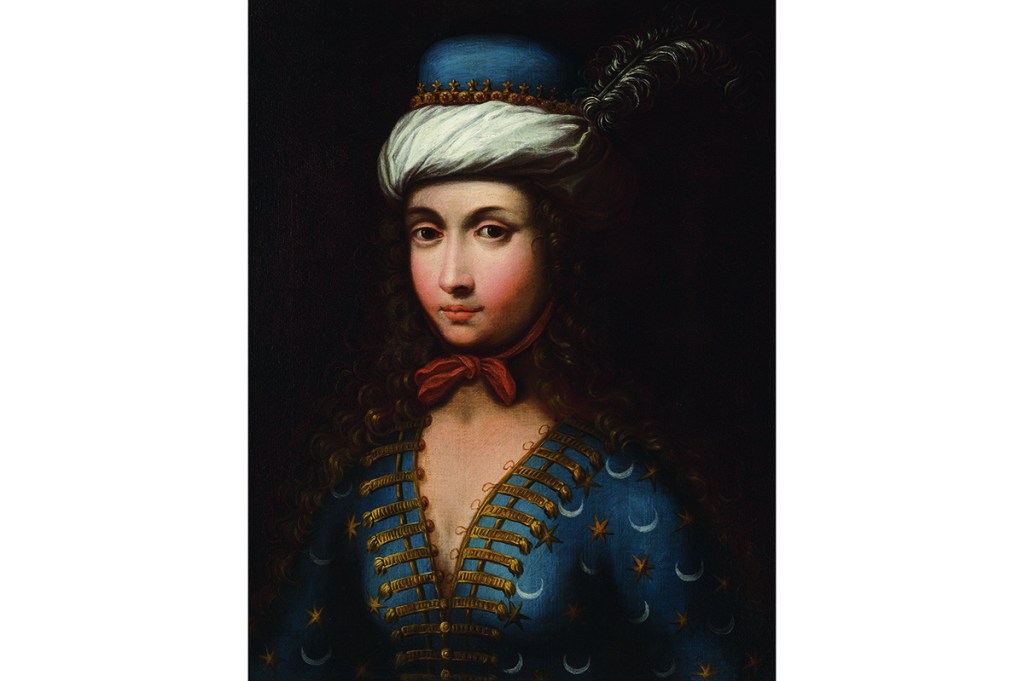This timely book by Jo Willett celebrates one of the most remarkable women of the 18th century. Lady Mary Wortley Montagu was so impressed by the Turkish technique of ‘engraftment’ to prevent smallpox that in 1721, exactly 300 years ago, she arranged for the first such inoculation in England — and, even more controversially, had it carried out on her own three-year-old daughter. Smallpox pus from a sufferer was carried in a walnut shell and applied to a cut made in her daughter’s arm.
She discovered the technique too late to use it on herself. As a young woman and court beauty, she had contracted smallpox during one of the frequent epidemics that swept London, leaving her scarred and without any eyebrows. This gave her what contemporaries described as ‘the Wortley stare’, a penetrating gaze which, allied with her fierce intelligence, made her a formidable proposition.
Together with Princess Caroline, the wife of the future George II, she embarked on a campaign to persuade a deeply reluctant British public that the process was safe. Caroline inoculated her own royal children and, in a brilliant publicity stunt, the two women campaigned successfully for six prisoners in Newgate jail to be given their freedom if they allowed themselves to be similarly immunized. The press loved it: a dream story which managed to combine the royal family, crime and the controversial treatment of a disease.
But clerics still thundered from the pulpit that Mary was immoral. One declared that smallpox was a judgment on human sin and should be tolerated rather than prevented by such heathen and counterintuitive methods.
Mary had learned of the technique when her husband was ambassador to Constantinople. She left some remarkable accounts of life in the Muslim world. On visiting a hammam, she was struck by the relaxed freedom of the 200 or so naked women patrolling around. They tried to persuade her to join them, not least because she looked unconscionably hot in her own clothes, and were fascinated when they discovered the whalebone corset that constricted her; a European constriction which, like others, she noted admiringly, they did not necessarily suffer from. An unconventional dresser, she later ordered a Turkish costume back in England and set a brief vogue for turbans and harem pants.
The first woman to contribute to The Spectator (with an article on how unsatisfactory husbands could be, although she was careful to say she was perfectly happy with her own), by 26 she was a friend of coffeehouse writers such as John Gay and Joseph Addison, who co-founded the first version of The Spectator with Richard Steele in 1711. Voltaire praised her wit. She was particularly close to Alexander Pope and collaborated with him on a satire about George I’s recently arrived Hanoverian family. She described the king as ‘an honest blockhead’ with a predilection for large women, which did not advance her own career at court — although she conscientiously learned German in case it could help her husband.
The couple bought a house next door to Pope’s famous grotto in Twickenham. Only four foot tall and suffering from tuberculosis of the bone, Pope was acutely conscious of what he felt to be his physical deficiencies. When Mary was abroad in Constantinople, he began writing to her ever more amorously and composed a poem about two lovebirds who were kept apart, which she had to deal with tactfully.
But at some point Mary’s tact ran out and Pope became the most virulent of literary enemies, lampooning her frequently (any man who knows her will end up ‘poxed’ himself, was one of his crueler jibes) — and she gave back as good as she got. The gunsmoke from the literary cannons they fired off at each other has obscured the precise cause of the argument, but it seems that Pope propositioned her and she laughed at him. This certainly is what a contemporary satirical play suggested and what the literary world came to believe, as, in Willett’s words, the truth became circular.
Mary’s reputation was more vulnerable than Pope’s, and she retreated exhausted from the fray; moreover, by then she was beginning to find her husband not particularly satisfactory after all and decamped to the continent for an affair with a bisexual rogue half her age, despite her suspicion that ‘no man since the Flood has ever fallen in love with a woman over 40’.
Willett tells her story briskly and well, and with considerable wit herself. There is a pleasing Georgian concision to proceedings. I could have done with a few more quotes from Mary’s own letters and work — but then less of this is available than it should be.
During her lifetime it was considered unladylike to publish, so her contributions to The Spectator were anonymous. Her wonderful Embassy Letters from Turkey were only published after her death in 1762, despite her family’s determined attempts to suppress them; they were an immediate success.
Mortified, her only daughter, Lady Bute, whose early smallpox inoculation had been so influential, burned all the explicit diaries Mary had kept for the 50 years of her adult life — a tragedy, as they could have presented a distaff view of the 18th century to rival Boswell’s. Instead, this biography serves as a fitting tribute to a woman who was described by a contemporary as ‘the most wise, most imprudent, loveliest, disagreeablest, best-natured, cruelest woman in the world’. No wonder she wrote for The Spectator.
This article was originally published in The Spectator’s June 2021 World edition.

























